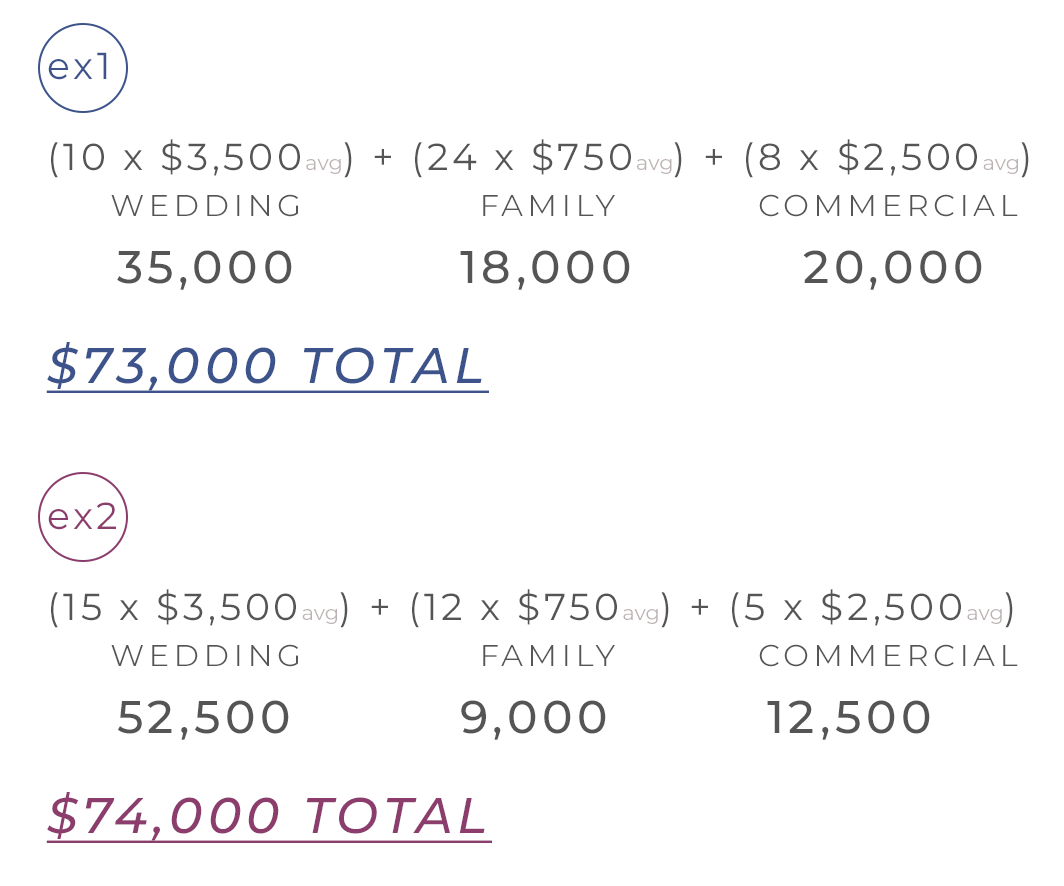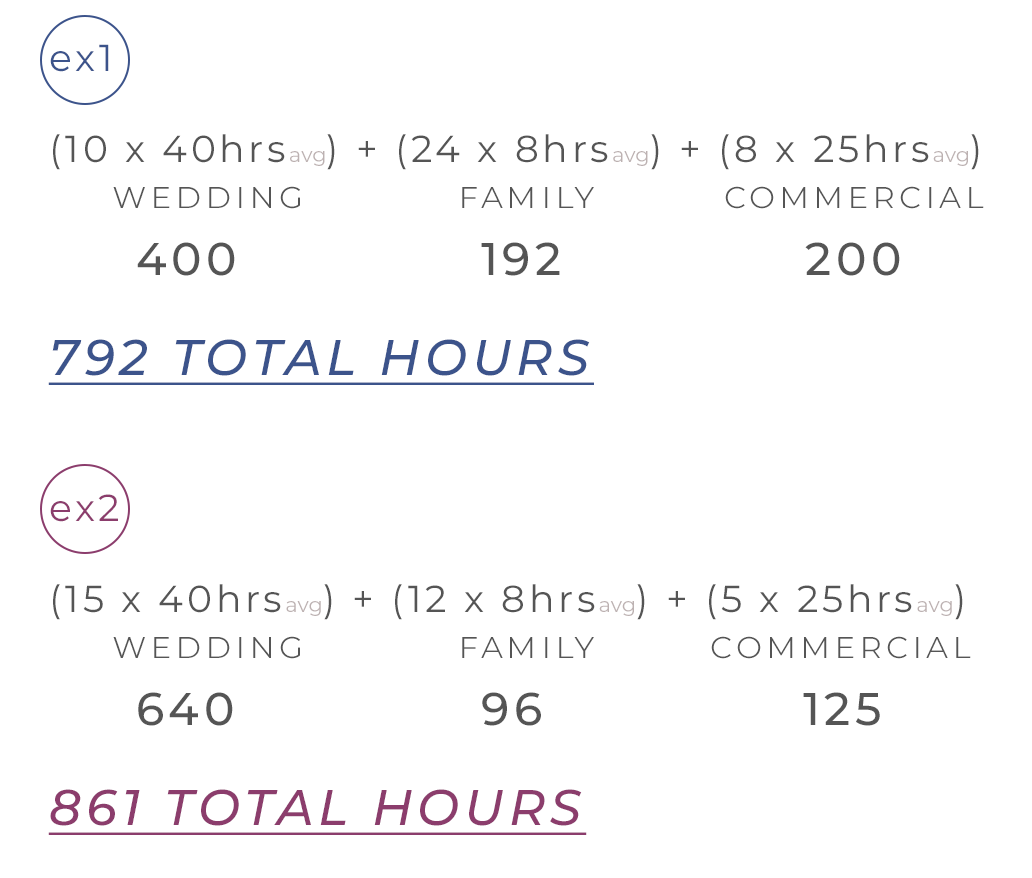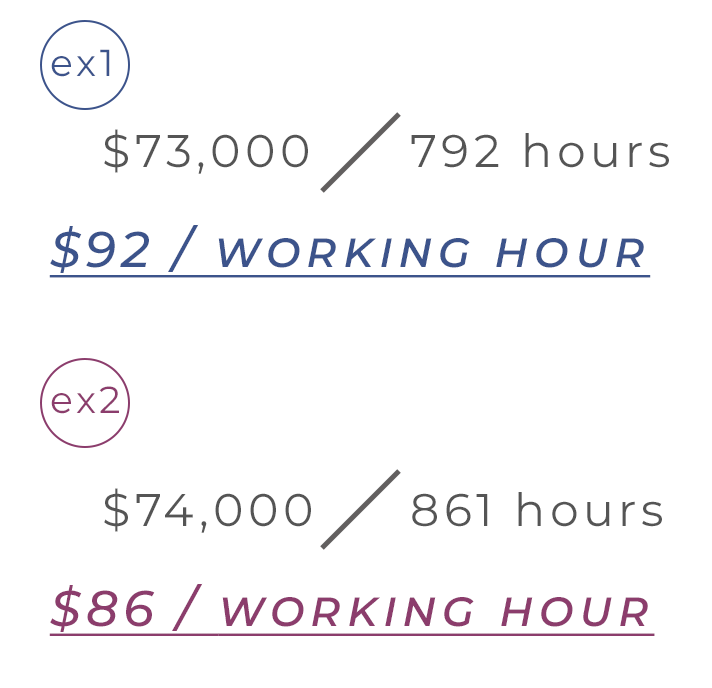How do I (and why should I) translate money goals into jobs goals?
I give this question a big fat gold star
... and a thumbs up too!
This is a really insightful question because thinking about goals in terms of 75K of revenue per year (for example) is overwhelming for one, but more importantly, it's often unattainable ...not because the amount itself is unattainable but because the goal is too broad.
If you are a photographer and you shoot weddings, families, and commercial photography, and each of those categories also has three different value variations, there are literally thousands of ways to create that revenue. So if you're sitting at your desk at the beginning of the year and you're creating a goal to bring in a certain amount of money, you're only doing half of the equation. Even more pertinent, you're only doing the last portion of the equation, not the more complex (and informative) preliminary portion.
And why is it important to do this work?
Short answer: it informs how you spend your time and money. Do you spend your energy advertising for family sessions, or do you spend more time focusing on commercial work? And how do weddings fit into that? How do you know that the jobs you're booking are going to add up to $75,000?
Below are two examples of how a business can create a very similar amount of revenue:
Hopefully you noticed in the above example that there are two fairly different amounts of jobs/clients. Just by glancing, it looks like example 2 is the better option. In the second example, there are 32 jobs total (and likely 32 different clients). In the first, there are 42 jobs/clients. That's over a 30% increase for about the same amount of money!
BUT, if you know me, you know I always like to dig a little further. Each of the three job categories are correlated to different amount of time (and cost) per job. In a future blog post, I'll dive into calculating annual cost, but for now, we're going to stick with revenue and time.
...but if you're interested in getting a jump start, check out this past post about calculating margin.
In any case, below is the breakdown for each scenario when considering average time spent per job/client.
See where I'm going here? Figuring the specifics for the equation that compute your end dollar goal will give you sooo much more information! Now example 1 is starting to look 69 hours more appealing. That's a over a week and a half of extra work time.
And, let's go one step further. Now that we know the total projected revenue and total hours spent, we can figure out how much money per hour we're bringing into the business.
Hello, more $$$ per hour!
You make my life so much easier.
Okay, so let's sum this up.
WHY is it important to translate annual goals from dollar amount into number of jobs?
Answer: It gives you a more specific goal to work towards. Booking 10 weddings, 24 family sessions, and 8 commercial jobs is so much easier to wrap your head around than somehow bringing $75,000 into your business. It also helps to inform where you should put your marketing or advertising budget, and/or what time of year you should be focusing on which category.
And HOW do you create the best goal for your business?
Answer: Start by creating different scenarios for your business using the average revenue for each category. Make sure those scenarios are relevant to your industry and attainable for where your business currently sits (hello, SMART goals). Then work to break down the dollar amount that is coming from each category and the average time spent per job. Compare the reality of these scenarios to one another and assess which is actually going to be the most beneficial for your business. Once you've settled on the best scenario, you have a new, measurable annual goal for your business. As the months pass, you can reassess and either alter the numbers or your time based on how the bookings have progressed.




